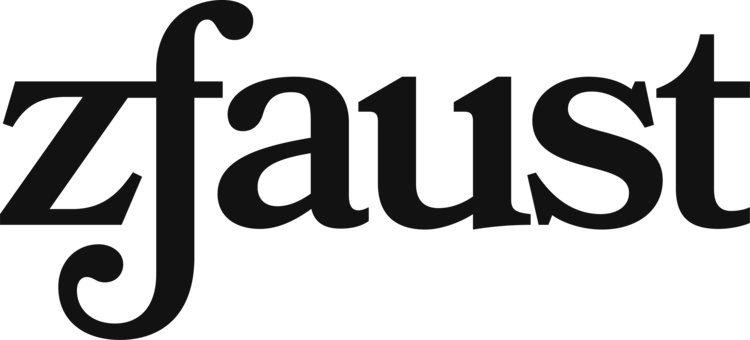The Project Process
The Project Process is sometimes unknown to non-designers and folks who’ve never worked with a designer before.
This uncertainty makes people nervous about working with a designer for many reasons, the most significant reasons being lack of control and the opportunity of the project going awry.
I outline my Project Process for everyone to demystify the work done behind the curtains and ensure that there are a lot of checkpoints that prevent us from straying away from the objective of the project.
1.
Say “Hello”
When you’re ready to work together, simply reach out through email or fill out a contact form.
This message doesn’t need to be formal or informational. A simple “hello” and a sentence describing your project works perfectly to get the ball rolling.
Once I receive your message, I will follow up with you as soon as possible.
2.
The Interview
After a few emails, we’ll schedule an informal interview.
This is one of my favorite parts of the process! It is when I get to know all about your project, your organization/business, and you!
Each interview consists of some basic questions so I can fully understand your organization, all the beautiful things you do, and the scope of the project. Although it may sound intimidating, it is really just a conversation. Also, you’ll receive the questions before we meet if you like to prepare.
This interview is also an opportunity for you to get to know me and to ask any questions you may have about the project moving forward.
The interview is typically held via Zoom, but if our paths are bound to cross we can meet in person as well! Whichever you prefer.
3.
Project Brief & Contract
Once I learn about your organization and the project, I will send you the project brief and contract.
The project brief is a document that describes the project and defines the project’s outcome. It includes background information about your organization and a clear set of objectives that will enable us to make design decisions that ensure we achieve the best results.
Please note that the project brief is a collaborative document. You will receive a draft of the brief that you are free to adjust as necessary.
The contract is a simple document that outlines the project's parameters like deliverables, timeline, cost breakdown, payment, and payment schedule. It also includes things like copyright ownership, how to accommodate for project adjustments, and liabilities.
Please note that the project will not begin until both the project brief and the contract are signed by you and me.
4.
The Design Process
No matter how big or small, every project goes through the design process.
The design process is a loose set of steps to create solutions to achieve the project’s outcome and create the appropriate deliverable for your needs.
Like the project process, the design process creates a framework with frequent check-ins to prevent the project from steering off course.
-
The design process starts with research to gather the information we need to make informed decisions throughout the rest of the process.
This research includes information like:
Auditing your organization’s current marketing materials and visual design
Identifying key stakeholders and clarifying your target audiences’ needs and challenges
Recognizing competitors and mapping the competitive market
Determining your organzation’s strengths, weaknesses, opportunities, and threats
This phase builds the foundation of the rest of the design process. For every hour spent researching, we save many more when designing.
-
This phase is about brainstorming all the potential solutions to fulfill the project brief.
Through exercises like mind mapping, forced relationships, & storyboarding, lots & lots of ideas are created.
But only the best make it to the next phase.
-
Once we select the ideas that we move forward with, I gather visual research to create visual concept boards.
A visual concept board is a collection of visual inspiration that gives us an idea of how the project will look.
It shows elements like colors, fonts, imagery, illustrations, logos, and layouts.
This step is vital as it provides a prototype of what the project will look like without spending hours creating everything from scratch.
So if we decide a certain font style doesn’t work we can easily swap it out with a style that will.
-
After you select one of the visual concepts, it moves into development. In this phase, the project comes to life.
The color palette is solidified, fonts are selected, illustrations are drawn up, logos are digitized, and documents are laid out.
Although your feedback has been vital throughout this process, this is when you provide it more frequently to ensure the project evolves without any major surprises.
Typically, you will provide feedback several times before the project moves to the last phase.
-
After the project is fully developed, it goes into refinement. All major design decisions are made by this phase, and now is when the spelling is checked, layouts are tightened, and every stray pixel is cleaned up.
This phase naturally occurs after the client provides the last round of feedback.
5.
Project Completion
Once the project is completed (or there are no more rounds of revisions) and you approve the final design, I'll email you a link with the high-quality, production-ready files in the formats of your choice.
Please note that you’ll have lifetime access to your files. If you ever lose them, delete them, or get a new device, you’ll be able to access them.
❋
Additional Services & Assistance
Once you have your design files, you’ll need to share them with the world. I’m happy to assist you in finding a printer, ordering printed materials, launching your website, or uploading images to your website.
If you’re ready to work together or have any questions please feel free to reach out and get the conversation started ☺






